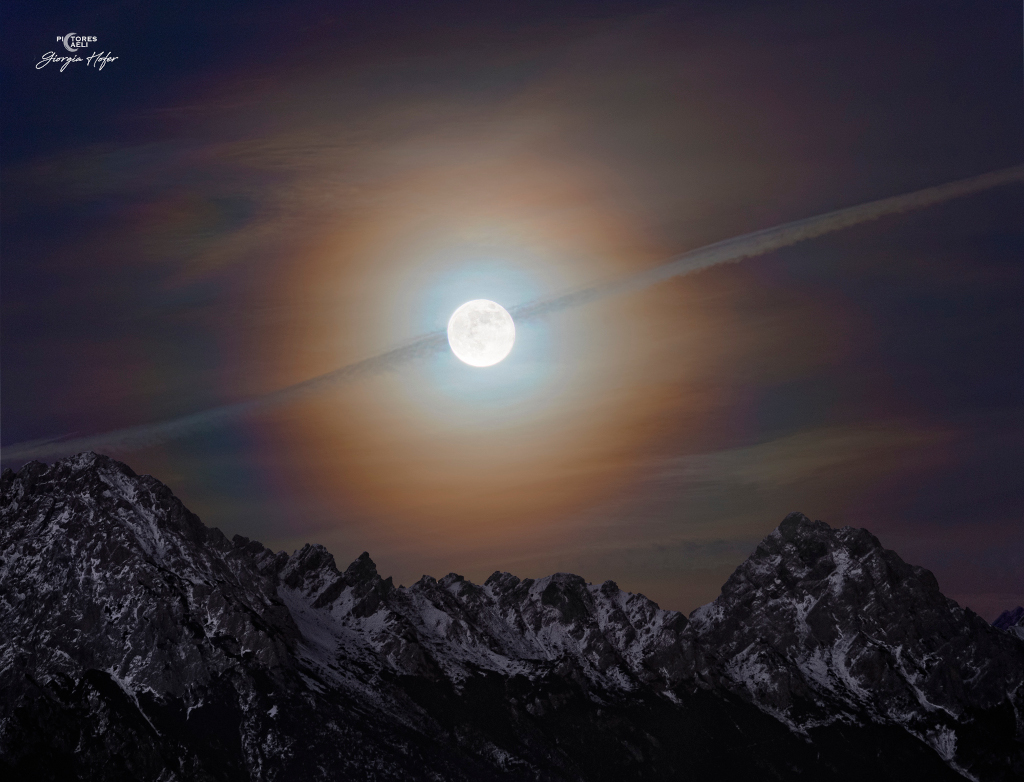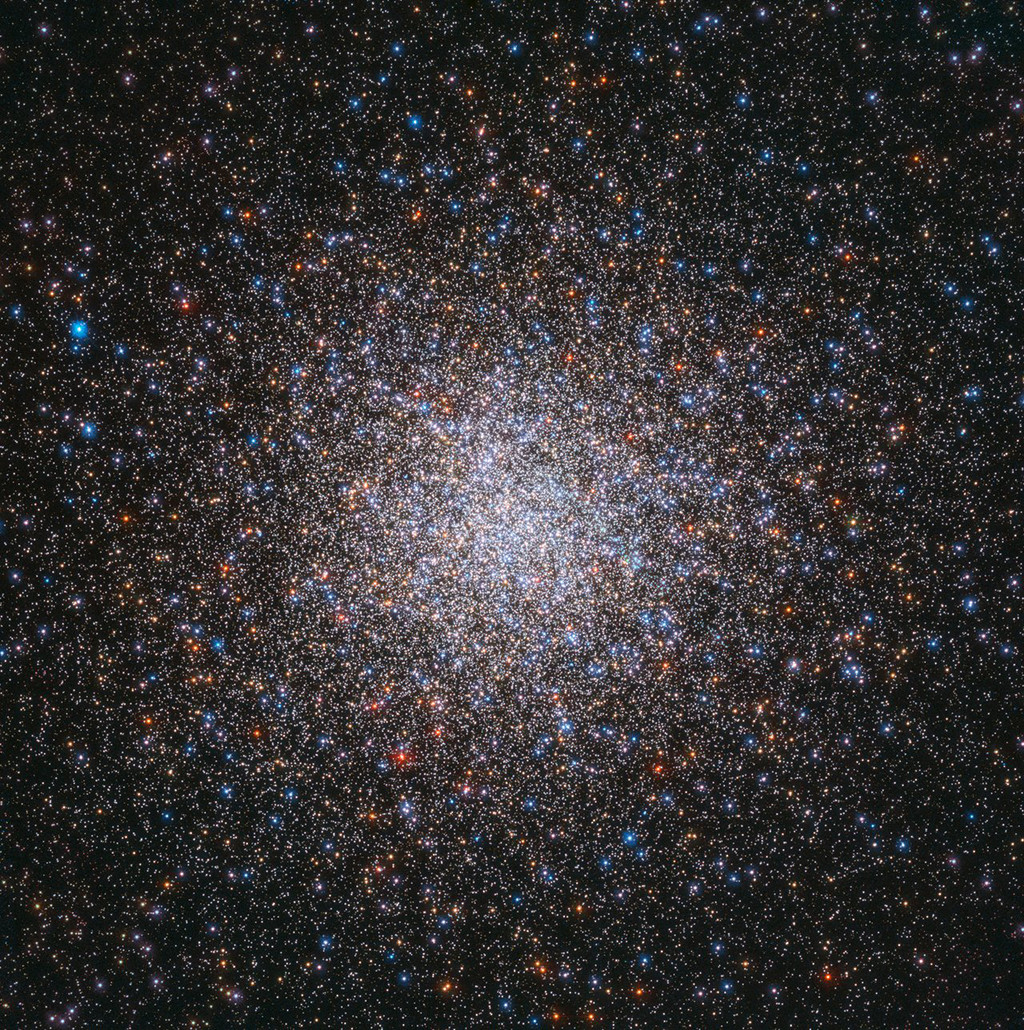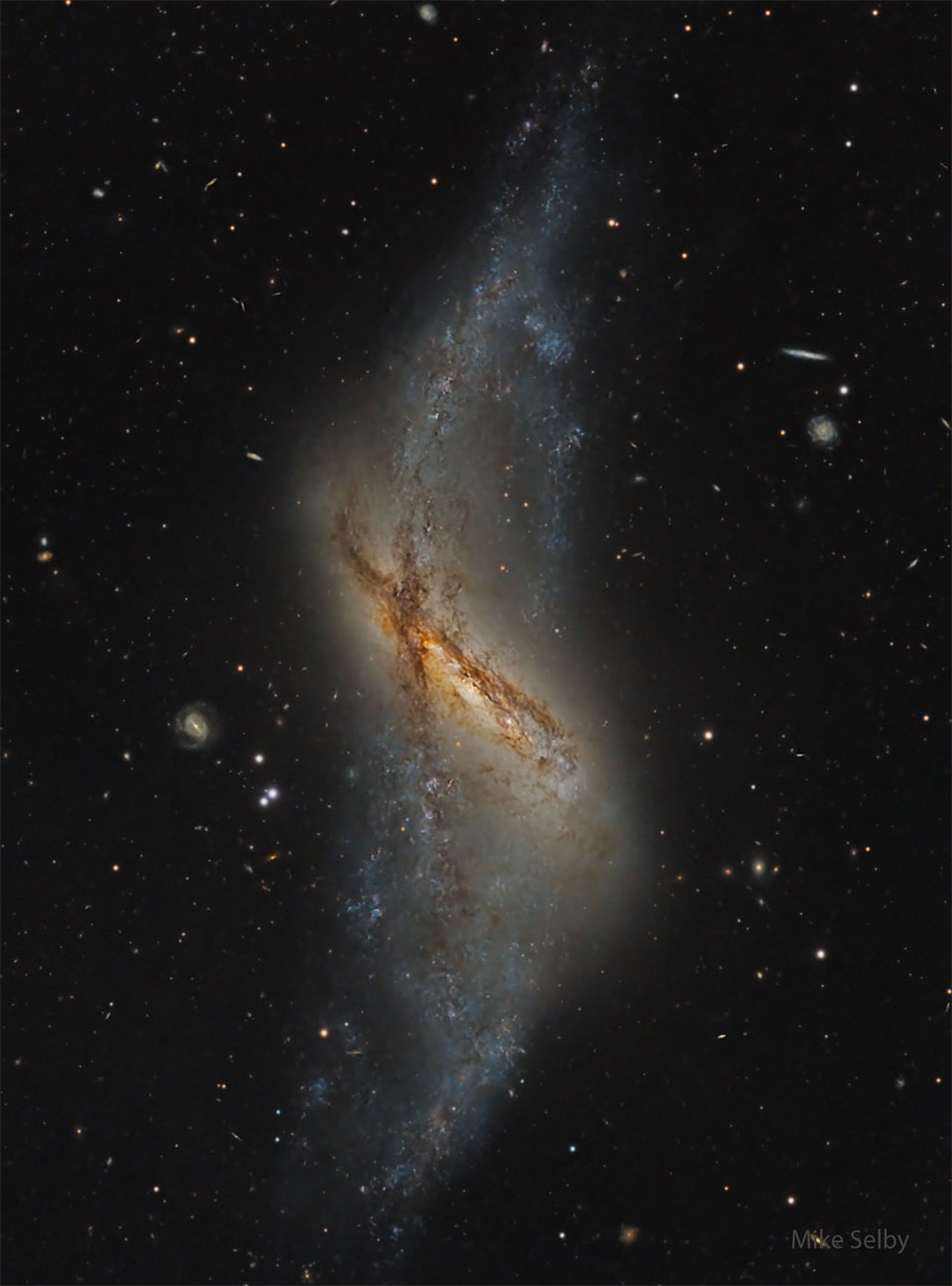Nombre total de pages vues
20/12/2024
SANTé/MEDECINE - Le Remède de Grand-Mère Efficace Contre l'Arthrose - les Rhumatismes et les Douleurs Articulaires.
ASTRONOMY - The Long Night Moon
Image Credit & Copyright: Giorgia Hofer and Dario Giannobile (Pictores caeli)
Explanation: On the night of December 15, the Full Moon was bright. Known to some as the Cold Moon or the Long Night Moon, it was the closest Full Moon to the northern winter solstice and the last Full Moon of 2024. This Full Moon was also at a major lunar standstill. A major lunar standstill is an extreme in the monthly north-south range of moonrise and moonset caused by the precession of the Moon's orbit over an 18.6 year cycle. As a result, the full lunar phase was near the Moon's northernmost moonrise (and moonset) along the horizon. December's Full Moon is rising in this stacked image, a composite of exposures recording the range of brightness visible to the eye on the northern winter night. Along with a colorful lunar corona and aircraft contrail this Long Night Moon shines in a cold sky above the rugged, snowy peaks of the Italian Dolomites.
19/12/2024
ASTRONOMIE - Les plus beaux astres de la Voie Lactée - La petite Mercure
SANTé/MEDECINE - Le cancer du sein - Herceptin et lapatinib. un duo gagnant ?
ASTRONOMY - Messier 2
2024 December 19
Image Credit: ESA/Hubble & NASA, G. Piotto et al.
Explanation: After the Crab Nebula, this giant star cluster is the second entry in 18th century astronomer Charles Messier's famous list of things that are not comets. M2 is one of the largest globular star clusters now known to roam the halo of our Milky Way galaxy. Though Messier originally described it as a nebula without stars, this stunning Hubble image resolves stars across the cluster's central 40 light-years. Its population of stars numbers close to 150,000, concentrated within a total diameter of around 175 light-years. About 55,000 light-years distant toward the constellation Aquarius, this ancient denizen of the Milky Way, also known as NGC 7089, is 13 billion years old. An extended stellar debris stream, a signature of past gravitational tidal disruption, was recently found to be associated with Messier 2.
18/12/2024
SANTé/MEDECINE - Le cancer du sein - HER2+, un récepteur surexprimé dans certains cancers du sein
ASTRONOMIE - Les plus beaux astres de La Voie Lactée - HD 188753 : en orbite dans un système stellaire triple
SANTé/MEDECINE - Les aliments à banir au Supermarché - Les graisses végétales hydrogénées : un piège pour votre cœur
ASTRONOMY - NGC 660: Polar Ring Galaxy
2024 December 18
Image Credit & Copyright: Mike Selby
Explanation: What kind of strange galaxy is this? This rare structure is known as a polar ring galaxy, and it seems to have two different rings of stars. In this galaxy, NGC 660, one ring of bright stars, gas, and dark dust appears nearly vertical, while another similar but shorter ring runs diagonally from the upper left. How polar ring galaxies obtain their striking appearance remains a topic of research, but a leading theory holds that it is usually the result of two galaxies with different central ring planes colliding. NGC 660 spans about 50,000 light years and is located about 40 million light years away toward the constellation of the Fish (Pisces). The featured image was captured recently from Observatorio El Sauce in Chile.
17/12/2024
ASTRONOMY - Near to the Heart Nebula
2024 December 17
Image Credit & Copyright: Jeff Horne & Drew Evans
Explanation: What excites the Heart Nebula? First, the large emission nebula on the upper left, catalogued as IC 1805, looks somewhat like a human heart. The nebula glows brightly in red light emitted by its most prominent element, hydrogen, but this long-exposure image was also blended with light emitted by sulfur (yellow) and oxygen (blue). In the center of the Heart Nebula are young stars from the open star cluster Melotte 15 that are eroding away several picturesque dust pillars with their atom-exciting energetic light and winds. The Heart Nebula is located about 7,500 light years away toward the constellation of Cassiopeia. This wide field image shows much more, though, including the Fishhead Nebula just below the Heart, a supernova remnant on the lower left, and three planetary nebulas on the image right. Taken over 57 nights, this image is so deep, though, that it clearly shows fainter long and complex filaments.
ASTRONOMY - Orion and the Ocean of Storms
2025 December 13 Orion and the Ocean of Storms Image Credit: NASA , Artemis 1 Explanation: On December 5, 2022, a camera on board the u...

-
2022 September 26 All the Water on Planet Earth Illustration Credit: Jack Cook, Adam Nieman, Woods Hole Oceanographic Institution ; Data ...
-
2025 May 11 The Surface of Venus from Venera 14 Image Credit: Soviet Planetary Exploration Program , Venera 14 ; Processing & Copyri...










